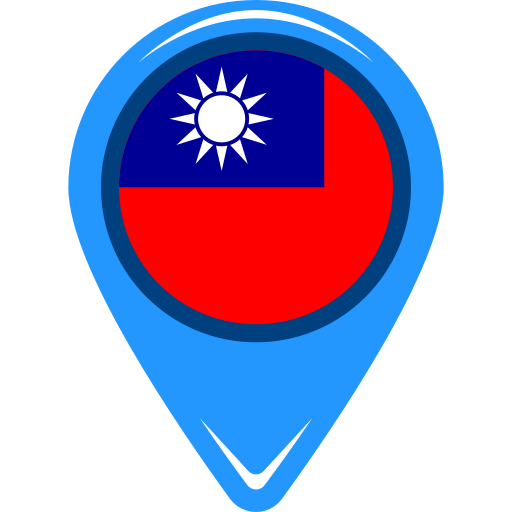When I first heard that PhilHealth could reimburse hospital bills even if you’re confined outside the Philippines, I honestly thought it was too good to be true. But after seeing a kababayan successfully claim back part of her expenses from a Taiwan hospital stay, I realized—this is a benefit many OFWs don’t know about but should.
If you’re working here in Taiwan, you never know when a health emergency might hit. And while Taiwan’s healthcare is excellent, hospital bills can still make a dent in your budget. That’s why it’s worth learning how the reimbursement process works before you actually need it.

Understanding PhilHealth’s Overseas Reimbursement Policy
PhilHealth is the national health insurance program for Filipinos. Most people think it’s only for use in accredited hospitals in the Philippines, but members who are confined abroad can also claim reimbursement.
Here’s the catch—it’s not like Taiwan’s National Health Insurance where they pay the hospital directly. Instead, you pay your bill in full first, then file a claim with PhilHealth to get reimbursed based on Philippine benefit rates. This means you won’t get 100% of your bill back, but it can still be a big help.
Step 1: Keep Your Membership Active
You can’t file a claim if your membership isn’t active. Here’s how I keep mine in good standing while working in Taiwan:
- Pay contributions on time – I usually pay annually through accredited remittance centers like Bank of Commerce’s Taiwan partner outlets. Some OFWs prefer quarterly payments.
- Save proof of payment – Always keep receipts or digital confirmation.
- Update your Member Data Record (MDR) – Make sure your details and dependents are correct.
Step 2: Know the 180-Day Filing Deadline
PhilHealth is strict—you must file your claim within 180 days from the date you’re discharged from the hospital abroad. Miss this window and your claim will be denied.
I recommend preparing your documents as soon as you’re well enough, or having a trusted family member start the process for you in the Philippines.
Step 3: Gather the Required Documents
This is where most OFWs get stuck. The hospital documents in Taiwan are usually in Mandarin, but PhilHealth requires English versions. You’ll need:
- PhilHealth Claim Form 1 (CF1) – Download from PhilHealth’s website.
- Medical Certificate or Hospital Abstract – Must be in English, stating your diagnosis, dates of confinement, and treatments received.
- Hospital Statement of Account & Official Receipts – Must be itemized and in English.
- Operative Report – Only if you had surgery.
- Proof of Active Membership – MDR or latest payment receipt.
Tip: Before you leave the hospital, request English translations from the billing or medical records department. Some hospitals may charge for this, but it saves you time later.
Step 4: Filing the Claim
Here are your filing options:
- Through a representative in the Philippines – This is the most common method. You authorize a family member to submit your claim at the nearest PhilHealth office.
- Direct mailing to PhilHealth – Possible, but slower and riskier since original documents are required.
When my friend filed her claim, she asked her sister in Manila to submit everything. The reimbursement was credited to her Philippine bank account after approval.
Step 5: Waiting for the Reimbursement
Processing times vary, but expect at least a few weeks to a few months. The reimbursement amount will be based on Philippine case rates, which are often lower than hospital charges in Taiwan.
For example, if your bill in Taiwan is equivalent to PHP 80,000, but the PhilHealth case rate for your illness is PHP 10,000, you’ll only get PHP 10,000 reimbursed.
My Personal Tips for a Smooth Claim
- Pay PhilHealth before you get sick – It sounds obvious, but some OFWs neglect their payments, thinking they won’t need it.
- Have an “emergency contact” back home – Someone who knows how to process PhilHealth claims and can visit their office if needed.
- Scan and back up all documents – Store them digitally in case papers get lost.
- Check your claim status – Follow up with PhilHealth via email at ofp@philhealth.gov.ph.
Common Mistakes That Lead to Denied Claims
- Filing after the 180-day deadline.
- Submitting documents without English translations.
- Missing receipts or incomplete hospital statements.
- Having an inactive PhilHealth membership.
Why It’s Worth Knowing This Process
When you’re abroad, especially in a place like Taiwan with a strong healthcare system, you might think PhilHealth is unnecessary. But medical emergencies can wipe out savings, and even partial reimbursement helps you recover financially.
For me, the peace of mind is the real benefit. I know that if something unexpected happens, I have one more safety net to fall back on.
Frequently Asked Questions
Can I file the claim myself from Taiwan?
Currently, PhilHealth requires in-person filing in the Philippines, so you’ll need a representative or use courier submission.
Do all illnesses qualify for reimbursement?
Most inpatient cases do, but the amount depends on the corresponding case rate in the Philippines.
Can my family use my PhilHealth while I’m abroad?
Yes, registered dependents in the Philippines can use it as long as your membership is active.
Is the reimbursement amount fixed?
Yes, it follows Philippine case rates regardless of what you paid abroad.
Final Thoughts
PhilHealth’s overseas reimbursement isn’t a magic solution that will cover your entire hospital bill, but it’s a practical benefit every OFW in Taiwan should keep in mind. By paying contributions regularly, keeping your documents organized, and knowing the process ahead of time, you’re protecting yourself and your family from financial strain.
As I’ve learned, being far from home doesn’t mean you have to give up your rights to the benefits you’ve earned. And when it comes to health and finances, every peso counts.
